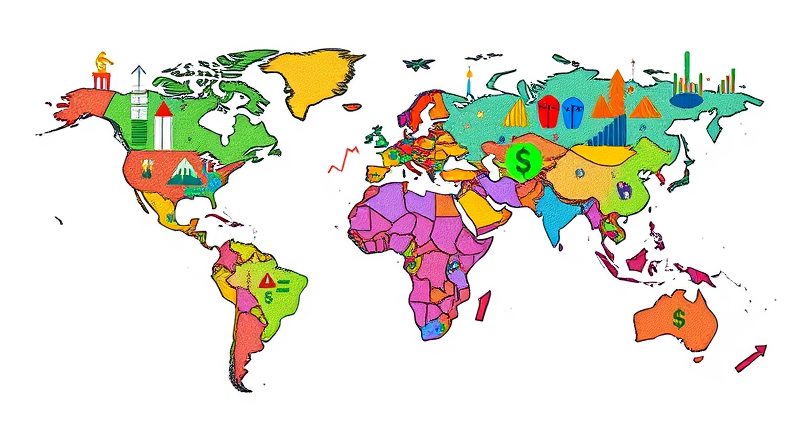
In today’s interconnected economy, staying confined to domestic markets can limit your portfolio’s potential. Global capital flows have reached unprecedented levels, with investors channeling trillions across borders in search of growth, diversification, and resilience. Whether you’re a seasoned professional or a retail investor exploring new frontiers, international investments offer unique pathways to enhance returns. Understanding the nuances of cross-border allocation is key to crafting a robust wealth-building strategy.
International investment encompasses several avenues, primarily split between portfolio and direct investments. Robust global diversification strategy typically involves purchasing stocks, bonds, or other financial instruments on foreign exchanges. Meanwhile, foreign direct investment (FDI) denotes equity stakes or ownership in businesses beyond your home borders. Together, these vehicles enable capital to traverse markets, industries, and currencies, unlocking opportunities unavailable in domestic arenas.
As of Q1 2025, the United States reported foreign assets totaling $36.85 trillion, balancing liabilities near $61.47 trillion. This net international position highlights both America’s deep engagement in global finance and the scope for investors worldwide to tap into vast pools of capital and opportunity.
Diversification remains a cornerstone of prudent investing. When domestic markets falter or stagnate, overseas holdings can smooth overall returns. By integrating international assets, investors build safeguard against domestic economic shocks and capture upside from regions on divergent growth trajectories.
No investment is risk-free, and going global introduces unique complexities. First, currency fluctuations can erode gains when converting returns back to your base currency. Understanding hedging mechanisms or accepting some volatility as a trade-off for diversification is essential. Investors must also contend with political shifts, regulatory changes, and economic instability, especially in emerging regions.
By recognizing these challenges upfront, you can structure positions and employ risk management techniques to mitigate downside exposure and safeguard capital during turbulent periods.
The landscape of FDI and cross-border portfolio flows continues to evolve. In 2024, global inward FDI hit a record $41 trillion, marking a 4.4% increase year-over-year. Advanced economies led the rise, but flows to emerging markets climbed even faster, up 7.6%. Notable growth in India, Mexico, and Brazil—each surging around 20%—underscores their accelerating appeal among asset allocators worldwide.
Such figures illuminate the momentum behind cross-border investment. Tools like the Kearney FDI Confidence Index provide forward-looking guidance, reflecting corporate sentiment on the most attractive markets for future expansion. Staying attuned to these metrics equips investors to pivot toward emerging hotspots and capitalize on evolving global dynamics.
Embarking on an international investment journey involves careful planning and research. The following approaches cater to a range of experience levels and capital commitments:
To optimize international allocations, blend developed economies with emerging markets, balance developed and emerging markets in your portfolio to smooth performance across global cycles. Always conduct thorough due diligence, reviewing country risk ratings, corporate governance standards, and macroeconomic indicators before committing capital. Networking with local experts and leveraging research reports can illuminate nuances often overlooked by global overviews.
Understanding your home country’s tax implications on foreign income is crucial. Understand unique tax implications and treaty benefits by consulting tax professionals. Additionally, revisit allocations periodically to realign with evolving objectives, adjusting currency hedges or sector weightings as conditions shift.
Finally, maintain a long-term perspective. Short-term volatility can test conviction, but disciplined investors positioned in quality assets across borders are more resilient in the face of market gyrations. Patience and consistency can transform international diversification into a powerful engine for wealth creation.
Imagine two investors at the start of 2020. Investor A allocated 100% to domestic equities, while Investor B split allocations 50/50 between U.S. and emerging market stocks. Over the subsequent three years, domestic markets experienced volatility, including a severe contraction in early 2020 and a rapid recovery. Investor B, by contrast, benefited from the impressive rebound in Asia and Latin America, where technology and consumer sectors outperformed.
By 2023, Investor A realized a 40% cumulative return, while Investor B achieved 48%. The international leg not only enhanced gains but also optimize your risk-return balance during turbulent periods. This exercise underscores the practical impact of global diversification for smoothing portfolio trajectories.
Pursuing international investments extends your portfolio’s reach beyond local confines, unlocking avenues for growth, protection, and innovation. By deploying diverse international asset allocation, you reduce concentration risk, access high-growth regions, and build adaptive defenses against domestic downturns. With diligent research, strategic asset allocation, and professional guidance, you can confidently navigate complex markets and harness the full potential of a truly global portfolio.
As capital flows continue to reshape economic landscapes, now is the moment to broaden your horizons, strengthen your returns, and forge a path toward enduring financial success on the world stage.
References













